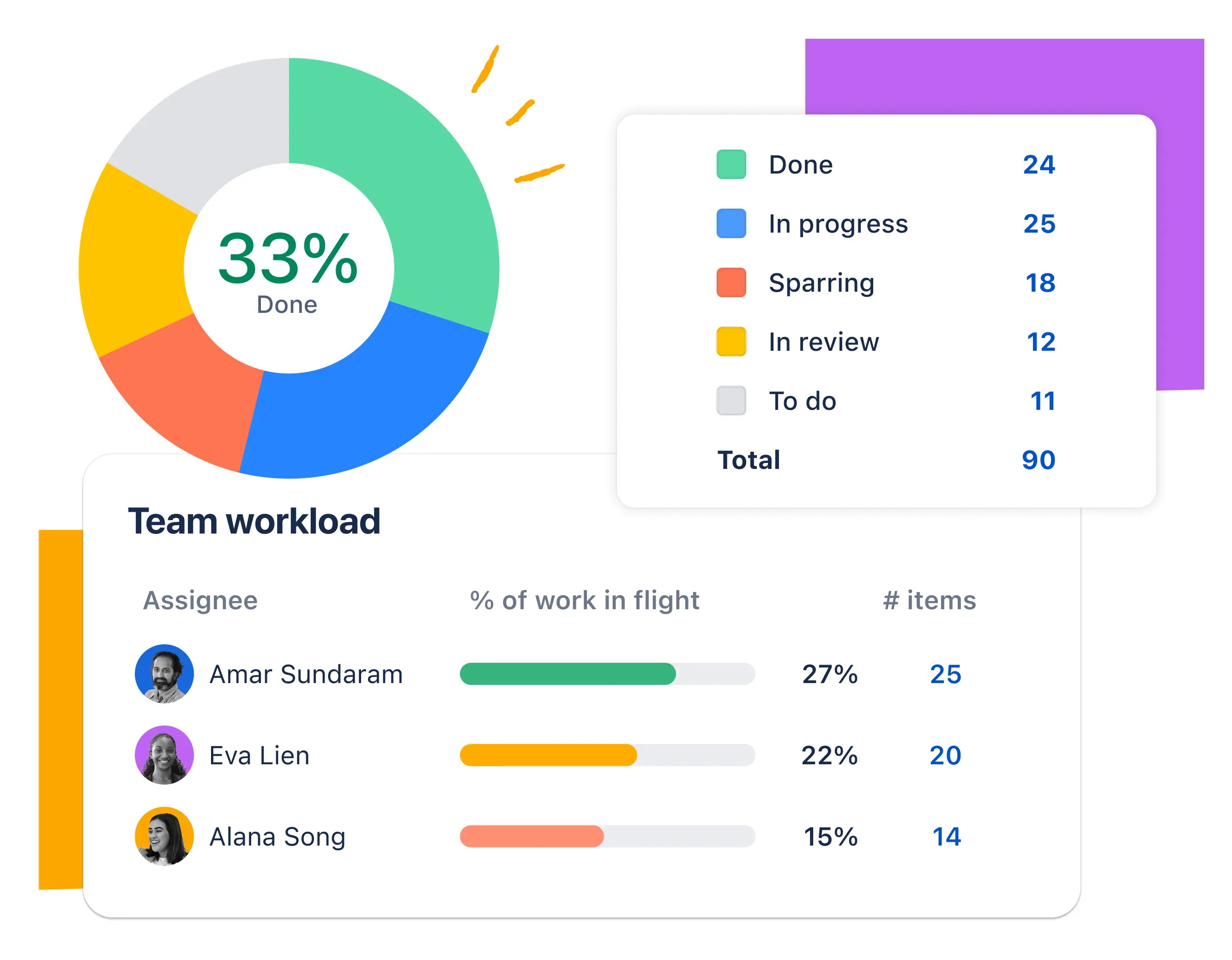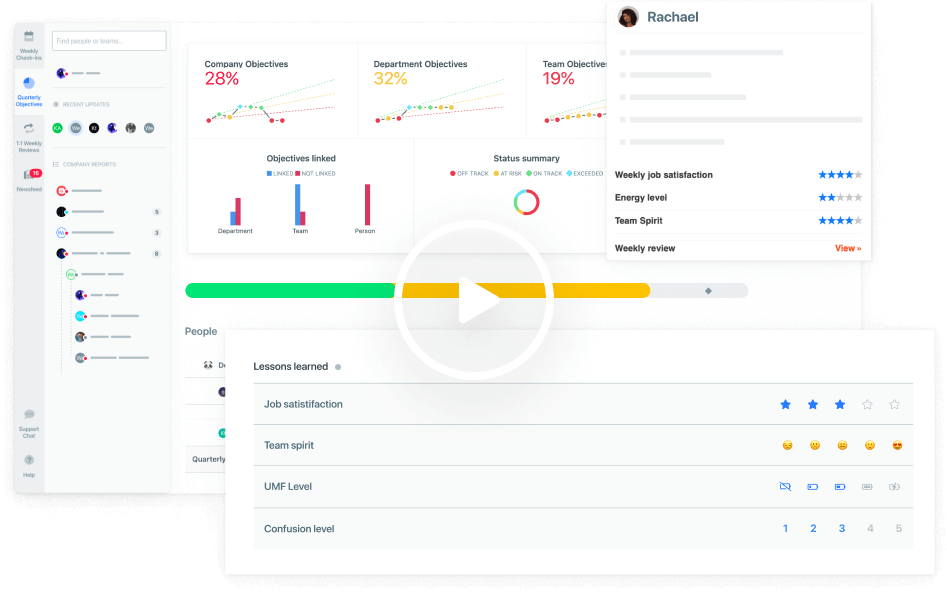


May 10, 2024
-
By Ivan
In today's ever-changing landscape, success isn't just about setting goals—it's about crafting a strategic and tailored approach.
That's where a goal management plan comes in.
With a well-crafted plan, you can synchronize your team, optimize resources, and navigate unexpected challenges effectively.
So, to all dedicated product managers, remember: a clear plan isn't just useful—it's indispensable. It serves as the foundation for creating something remarkable.
Keep honing those plans and prioritize your tasks to implement your plans with the best-followed strategies and tools. Let’s discuss this in detail -:
A Goal Management Plan is a carefully structured approach designed to help individuals or organizations set, pursue, and achieve their objectives efficiently.
It involves the identification of specific, measurable, achievable, relevant, and time-bound (SMART) goals, followed by the development of actionable strategies to reach these targets.
This goal planning not only outlines the desired outcomes but also details the resources required, potential obstacles, and steps for monitoring progress.
Through regular review and adjustment, a Goal Management Plan ensures continuous alignment with evolving priorities and challenges, paving the way for sustained success and growth.

Creating a Goal Management Plan involves several steps to ensure that goals are effectively defined, monitored, and achieved. Here's a step-by-step guide to help you create one:
1. Define clear goals
Start by identifying what you want to achieve. Use the SMART criteria to ensure your goals are Specific, Measurable, Achievable, Relevant, and Time-bound.
So, for managing a software development project, a clear goal could be to release a new version of the application with enhanced features within six months.
Using the SMART criteria, ensure the goal is-
2. Assess current state
Analyze your current situation to understand your starting point and the gap between where you are and where you want to be. For instance, evaluate the current state of the development team, including their skills, available technology, and the progress made so far in app development.
3. Identify resources and obstacles
Determine the resources you have at your disposal and anticipate potential obstacles you may encounter while implementing strategic planning goals.
As a Scrum Master, assess available team members, tools, and time for project execution. Anticipate challenges like scope changes, resource constraints, and technical hurdles.
By understanding these factors, you can strategize effectively to mitigate risks and ensure successful sprint delivery.
4. Develop actionable strategies
Break down your overarching goals into smaller, actionable steps or tasks. This breakdown will make the process more manageable and help maintain focus.
For instance, break down the overarching goal of releasing the new application version into smaller tasks such as requirement gathering, design, development, testing, and deployment.
Implement user surveys and interviews to gather detailed requirements. Utilize feedback or decision making sessions with stakeholders to refine and prioritize features.
Utilize wireframing and prototyping tools to visualize user interfaces. Conduct usability testing to ensure intuitive design and incorporate feedback iteratively.
Adopt Agile methodologies like Scrum or Kanban for iterative development. Break down tasks into smaller user stories and assign them based on team expertise and capacity.
Implement continuous integration and automated testing to ensure code quality. Utilize staged deployment strategies to mitigate risks and ensure a smooth rollout of updates to production environments.
5. Assign responsibilities
If you're working within an organization or a team, assign specific tasks and responsibilities to individuals based on their skills and areas of expertise. This will ensure accountability and efficient progress.
Importantly, assign timelines for each task and set milestones to track progress and stay on track. Regularly review the progress made towards your goals, analyze any deviations, and make necessary adjustments.
6. Revise and adjust
Be prepared to revise your plan as necessary. Flexibility is key to dealing with unforeseen challenges and changes in circumstances.
In Kroolo, managing goals is a breeze! Whether it's just you, your colleagues, or your whole team, our OKR management tool makes it super easy. Just a few clicks and you can track all your goals and key results on one seamless dashboard.
You can set measures or key results for each goal, using numbers, money, percentages, or whatever works best for you. No more juggling different tracking methods!
Forget about keeping track of goals separately. With Kroolo, you can save loads of time by tracking all your goals, big and small, in one dashboard
You can download this goal management plan template now and start creating your goals with ease.
Here are some of the recommended tools to create a goal management plan for your business -:
Kroolo is an AI-powered goal management software that lets you create goals and sub-goals using text or voice prompt. Moreover, with native AI capabilities, you can review all your goals in just one consolidated place.
Features
✅ Simplified OKR management: Easily track goal key results with just a few clicks in a seamless dashboard
✅ Manage goals: Define measurable targets for teams and individuals effortlessly
✅ Goal setting: Set measurable objectives and define key results with various metrics such as number, currency, %, and more
✅ Goal tracking: Track multiple goals, including parent and sub-goals, in a single dashboard in Tile and List view
Best for: Streamlining goal management and tracking for individuals and teams alike

via Lattice
Lattice is a sophisticated goal management and performance review software designed to optimize employee performance and foster professional goals. Its core functionality revolves around setting and tracking goals, providing feedback, and facilitating employee development within an organization.
Features
Best for: Medium to large enterprises looking to enhance employee engagement and performance management

via Friday
Friday offers a unique approach to keeping teams aligned and individuals focused on their most important objectives. Unlike traditional software that may focus solely on performance metrics, integrates with everyday tools and encourages consistent communication and reflection. Below is a breakdown of its key components:
Features
Best for: Companies of all sizes seeking to improve goal visibility and team alignment, while promoting a positive work culture through regular feedback and recognition

via Jira
Jira, primarily known for its prowess in project management and bug tracking, has extended its capabilities into the realm of goal management software. Tailored for agile development teams, it integrates seamlessly with the workflows of developers, managers, and stakeholders to ensure that short-term tasks align with long-term objectives.
Features
Best for: Medium to large organizations that require a robust project management tool with strong goal-setting and tracking features
5. Weekdone

via Weekdone
Weekdone stands as a streamlined, user-friendly goal management solution designed to enhance productivity and ensure alignment within teams and across entire organizations. Focused on the Objectives and Key Results (OKR) methodology, Weekdone facilitates the setting of clear, measurable goals, enabling teams to see how individual tasks tie into the broader company objectives.
Best for: Organizations of any size and for teams looking to adopt the OKR methodology
Conclusion
In summary, a goal management plan is crucial for navigating today's changing world. By using a clear and personalized approach, product managers can help teams work together, use resources well, and handle surprises.
As we move forward, let's keep in mind how important it is to have a clear and meticulously designed plan to align with your team’s roadmaps and foster synergy at the workplace.
So, sign up with Kroolo and create individual and team goals with clear planning now!
Let’s get started!
Tags
Productivity
Goal Management